photo essay
Meet the blacksmith of East Dover
Psychology student turned blacksmith has been forging in Nova Scotia for 48 years
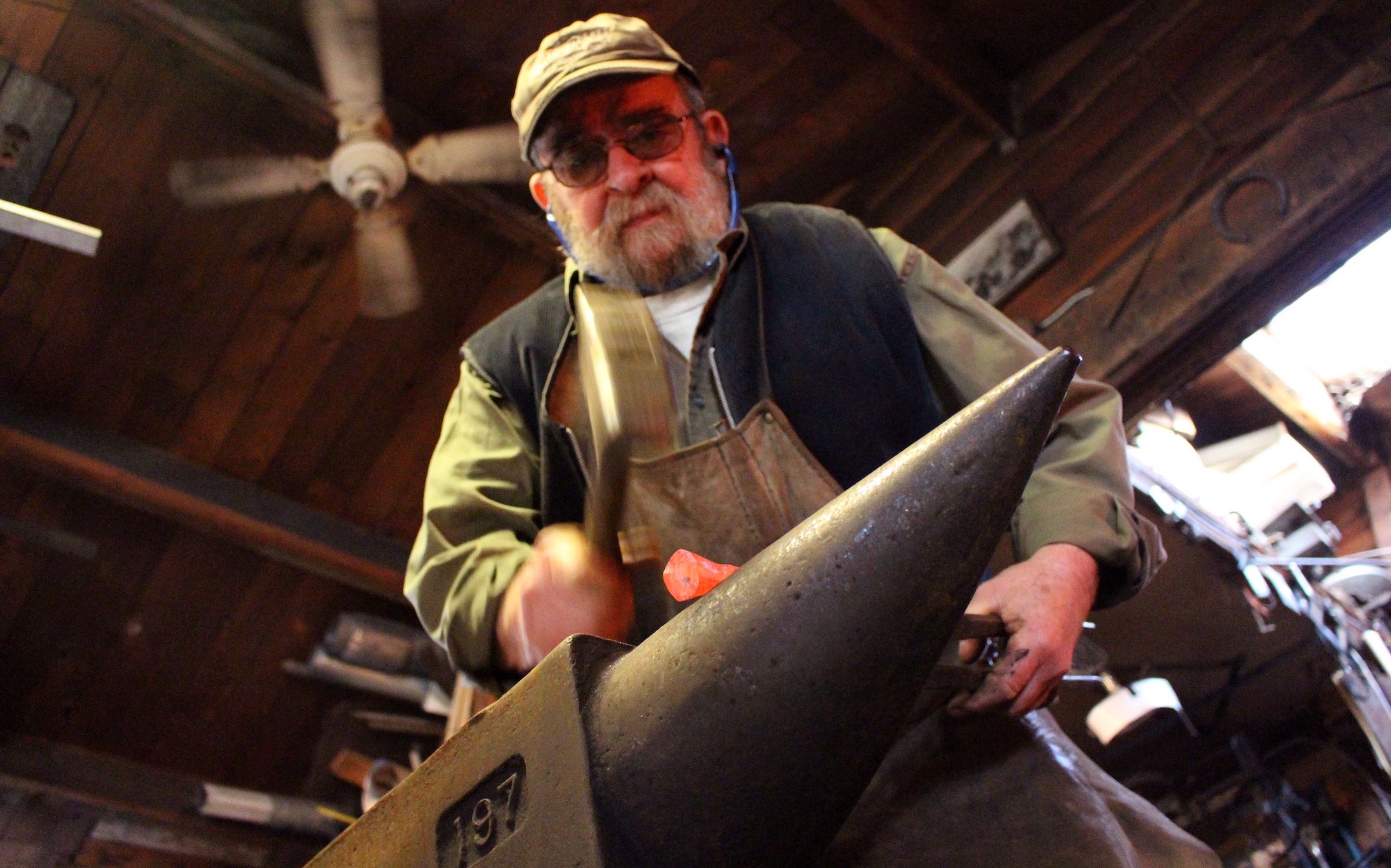
caption
John Little hammers on his anvil in his East Dover forge. He has been blacksmithing for 48 years.John Little has been turning discards into works of art for 48 years.
Originally from New Jersey, Little, 75, came to Halifax to pursue a master’s degree in psychology at Dalhousie University. Frustrated by the politics of academia, he abandoned his research and bought a property in East Dover, N.S.
“The main reason I started blacksmithing is that I wanted to avoid commuting to Halifax,” he says.
The Signal visited him at his home in East Dover on Monday to learn how he turns trash into treasure.
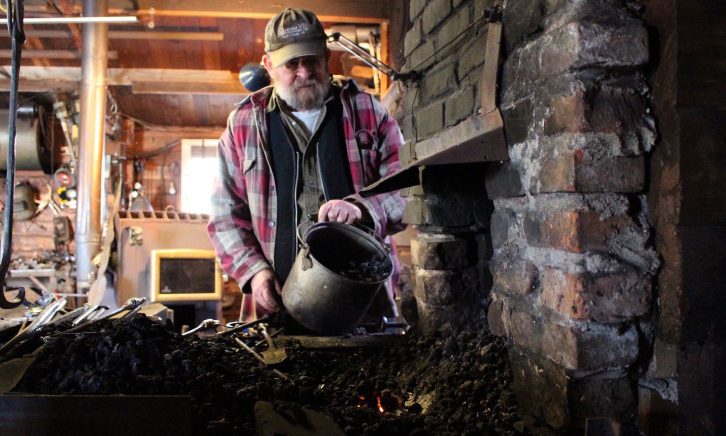
caption
John Little prepares his forge for a fire. He’s been blacksmithing for 48 years.Little collects scrap everywhere he goes.
Many of his possessions, from motors to hoses, were salvaged after they were thrown away. After years of collecting scrap metal, some metalworkers just give Little their scrap.
On this visit, Little turns a “drop” — a piece of steel that fell to the floor as a larger piece was cut — into something useful.
To start, he heats a coal fire in his forge to about 2,000 degrees Fahrenheit, before putting the scrap in.
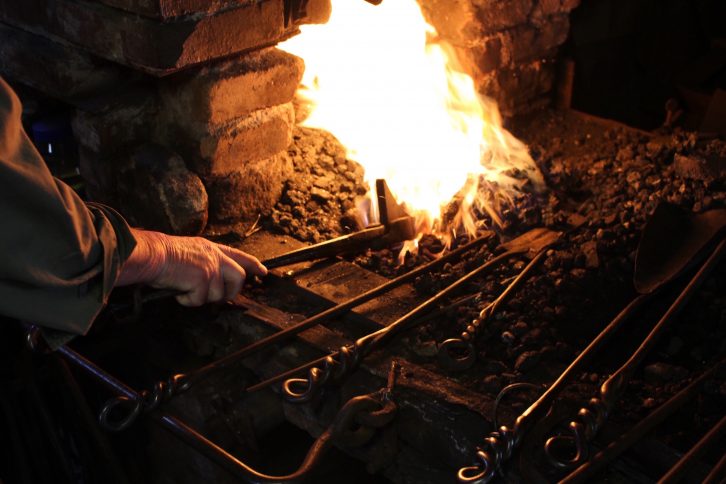
caption
Little puts a piece of scrap metal into the forge fire. It’s mild steel, meaning it has very low levels of carbon.Little began blacksmithing in 1970. He started out selling simple things, like candle-snuffers, at craft fairs. His first steady work was making anchors for local fishermen. Within 10 years, he was making “crazy, whacko” things he couldn’t have imagined: sonic sculptures for musicians and other large artistic works.
He says after the very first strike, he knew he would never look back.
“I picked up a hand hammer and hit a piece of hot metal … the metal moved, and that was it for me,” he says.
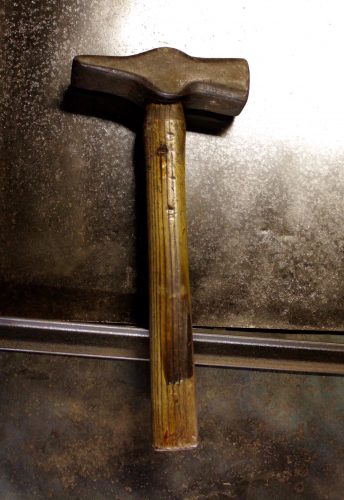
caption
A hammer used by blacksmith John Little.He takes the piece from the fire and puts it into a vise, hammering one end of the steel into a flat bud, before returning it to the fire. The steel has to be put into the fire every few minutes so it’s hot enough to shape.
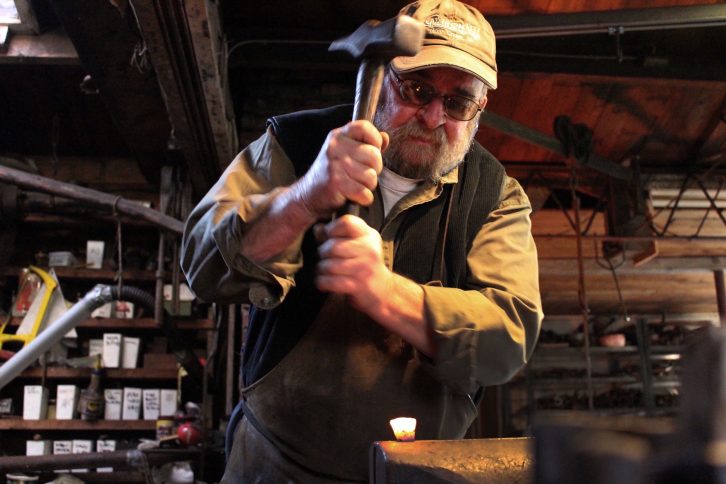
caption
Little prepares to strike a hot piece of iron at his East Dover forge.Little spends about five minutes pounding out the tip of the piece.
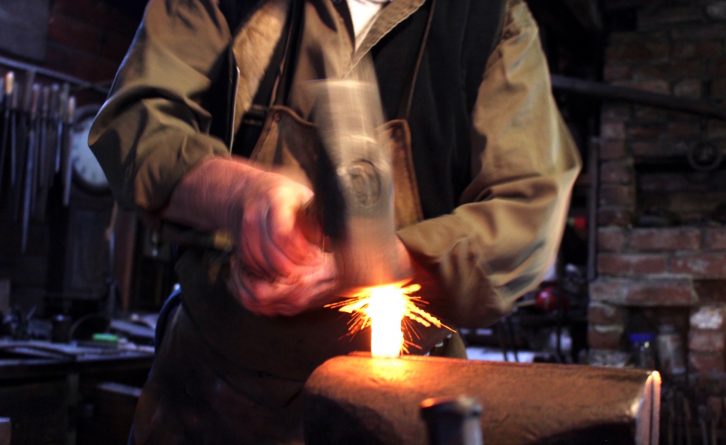
caption
Little’s hammer hits the piece of metal and sparks fly.After it sits in the fire for a bit, Little lengthens the piece by hammering it over an anvil.
This is the 10th forge Little has built on his property. Like his blacksmith work, he started out small, with only the basics, and reworked everything as he gained new materials and equipment.
“This workshop is my greatest work of art,” he says. “Sometimes I wonder how many hours I’ve spent in this forge, how many hammer blows.”
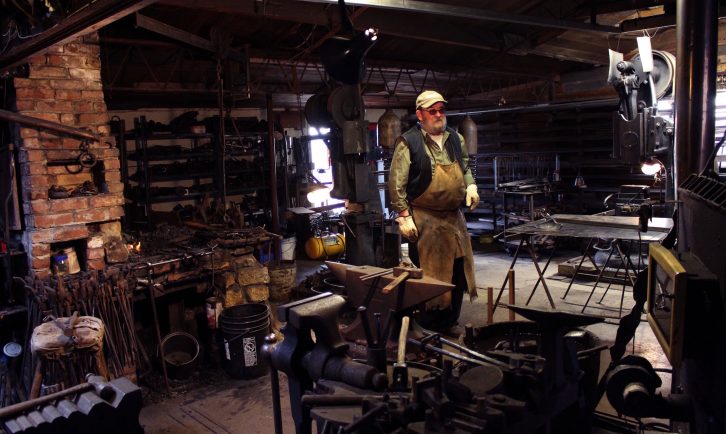
caption
John Little in his East Dover blacksmith’s workshop.He says blacksmithing is perfect for him.
“Blacksmithing is very unique. It has fire and heat and danger and violence, in a way, carefully controlled violence,” he says. “It’s got smoke, it’s got noise, it’s just got everything … it also appeals to my personality, which is a personality that loves to jump in.”

caption
Little pulls his work in progress from the forge’s hot coal fire.He says blacksmithing is good, honest work that allows for some artistry. After visiting craft fairs in the early days, he now does commissions for larger, more elaborate works.
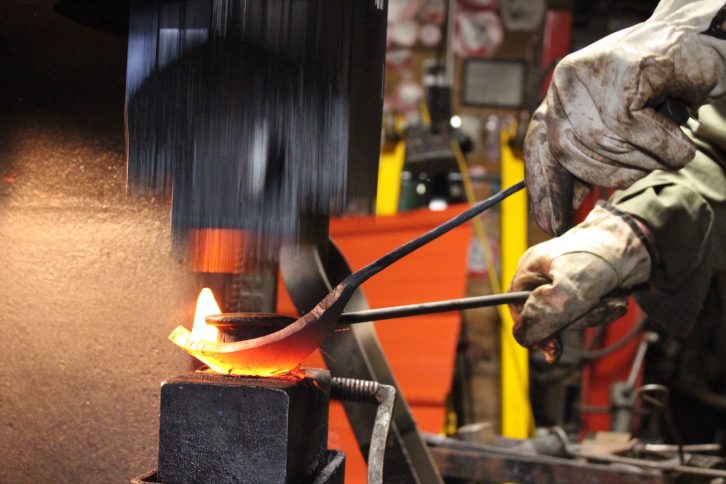
caption
Little uses a cast-iron power hammer he calls the Czar to hammer out a bowl shape.After another trip to the fire, Little uses a giant cast-iron power hammer he calls the Czar to pound the flat end of the piece into a bowl shape.
“I’ve always been driven to be creative,” he says.
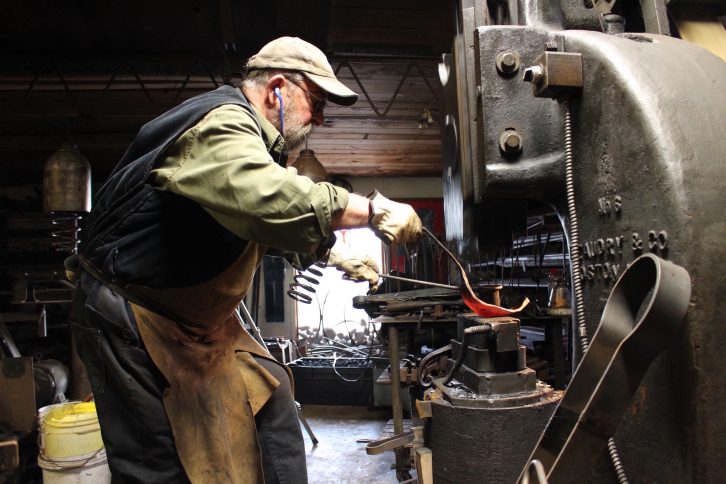
caption
Little says the Czar was built before the Russian Revolution.Once the bowl-shaped end is done, Little heats the stem and twists it into a curled design. He says blacksmithing is all about technique.
“It’s a finesse thing. People think it’s brute force; nothing could be further from the truth,” he says.
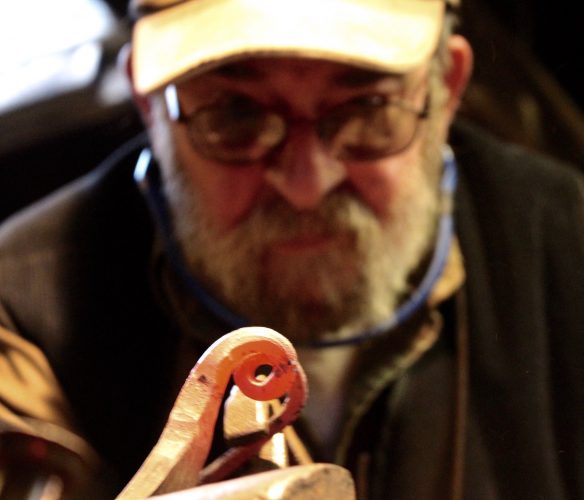
caption
Little twists the stem of his piece to add some artistic flair.Little says pieces made by hand are quite different from industrial, machine-made objects like cast-iron pieces. They are made with what he calls “dead energy.” With the hammer strikes and physical effort, a bit of the smith goes into every piece made.
“The energy of the smith goes into the piece; living energy,” he says.
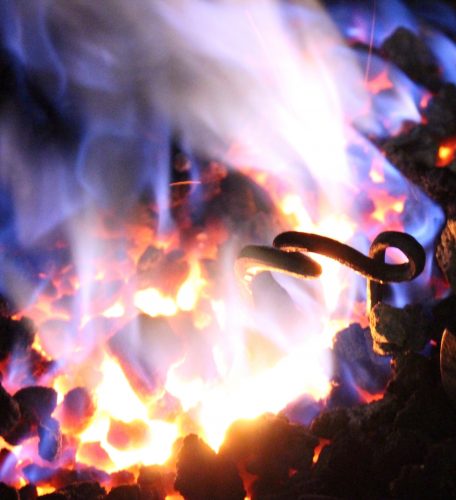
caption
Little’s almost-finished product sits in the fire a little longer before the final touches are added.After a few hours of work, a piece of discarded scrap metal has become an artistic bowl for pistachios.
Little says being a blacksmith is hard work, but there’s nothing in the world he’d rather be doing. That’s why he still works, despite being officially retired.
He often receives visitors who are looking for a unique Nova Scotia experience. Sometimes these are referrals from other artists.
“I just love the process and I love the people I meet because of blacksmithing,” he says. “You probably can’t name a country on Earth that we haven’t had a visitor from.”
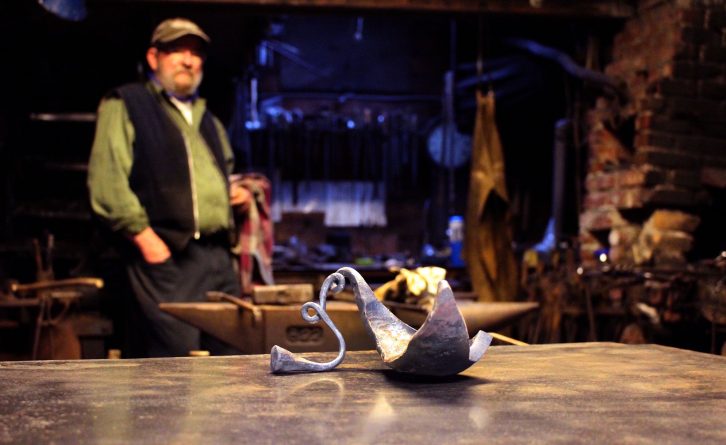


S
Steve Weis
B
Brent Kelloway
J
John little
J
John little